

Cells are very fast and crowded places. I recently learned that cells are extremely crowded and busy places.

I knew there's a lot of activity in cells, but I didn't realize just how much until I was reading Molecular Biology of the Cell . I was reading this molecular biology textbook to find out what's happened in molecular biology in the last decade or so, and found I had some misconceptions about how fast things happen inside cells. You may have seen the amazing "Inner Life of a Cell" video, which has spectacular animations of the activities inside a cell as a whilte blood cell responding to inflammation. (There's also a longer narrated version at the BioVisions website.) Cells are very crowded I imagined cells as big open spaces with lots of stuff happening, perhaps something like Central Park. I came across another interesting representation of how crowded cells are. Molecules move very very fast.
Drew Berry: Animations of unseeable biology. Free Resources for Science Teachers and Students. Molecular Movies - Home. Hybrid Medical Animation - Anatomy reveal. Mitochondrial Biology Unit. How Big is a ... ? Six-Legged Giant Finds Secret Hideaway, Hides For 80 Years : Krulwich Wonders... No, this isn't a make-believe place.

It's real. They call it "Ball's Pyramid. " It's what's left of an old volcano that emerged from the sea about 7 million years ago. A British naval officer named Ball was the first European to see it in 1788. It sits off Australia, in the South Pacific. Ancient antibiotic-resistant bacteria found in isolated cave - Technology & Science.
The samples were collected from a part of Lechuguilla Cave in Carlsbad Cavern National Park in New Mexico that has been cut off from any input from the surface for four million to seven million years.
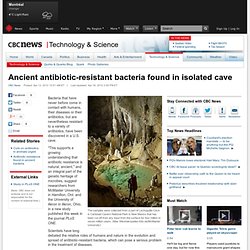
(Max Wisshak/speleo-foto.de/McMaster University) Bacteria that have never before come in contact with humans, their diseases or their antibiotics, but are nevertheless resistant to a variety of antibiotics, have been discovered in a U.S. cave. A bees-eye view: How insects see flowers very differently to us. By MICHAEL HANLON Last updated at 08:52 08 August 2007.

Beyond the Gardens: The Millennium Seed Bank Partnership. BBC Nature - Dinosaur gases 'warmed the Earth' 7 May 2012Last updated at 10:43 By Ella Davies Reporter, BBC Nature Apatosaurus, formerly known as Brontosaurus, produced a lot of wind Giant dinosaurs could have warmed the planet with their flatulence, say researchers.
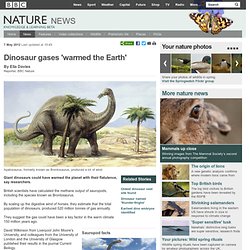
British scientists have calculated the methane output of sauropods, including the species known as Brontosaurus. By scaling up the digestive wind of horses, they estimate that the total population of dinosaurs, produced 520 million tonnes of gas annually. They suggest the gas could have been a key factor in the warm climate 150 million years ago. David Wilkinson from Liverpool John Moore's University, and colleagues from the University of London and the University of Glasgow published their results in the journal Current Biology. Sauropods, such as Apatosaurus louise (formerly known as Brontosaurus), were super-sized land animals that grazed on vegetation during the Mesozoic Era. Previous studies have suggested that the Earth was up to 10C (18F) warmer in the Mesozoic Era. Can a Jellyfish Unlock the Secret of Immortality? Each morning, Shin Kubota, who is 60, visits Muronoyu, a simple onsen popular with the city’s oldest citizens that traces its history back 1,350 years.
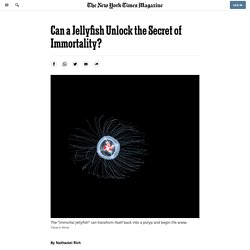
“Onsen activates your metabolism and cleans away the dead skin,” Kubota says. “It strongly contributes to longevity.” At 8:30 a.m., he drives 15 minutes up the coast, past the white beach, where the land narrows to a promontory that extends like a pointing, arthritic finger, separating Kanayama Bay from the larger Tanabe Bay. Quantum Biology.
Evolution. Plant Communication. Online Textbook of Bacteriology. Bacteria Make Drug-Like Molecules in Humans. Bacteria Make Drug-Like Molecules in Humans Janelle Weaver, PhD Small molecules that are produced by bacteria in the human body may represent a promising starting point for studying microbe-host interactions, and potentially a rich source of therapeutics.
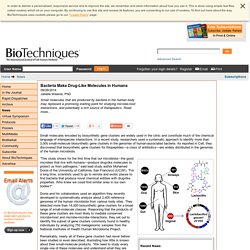
Read more... Among Trillions of Microbes in the Gut, a Few Are Special. In the mid-2000s Harry Sokol, a gastroenterologist at Saint Antoine Hospital in Paris, was surprised by what he found when he ran some laboratory tests on tissue samples from his patients with Crohn's disease, a chronic inflammatory disorder of the gut.
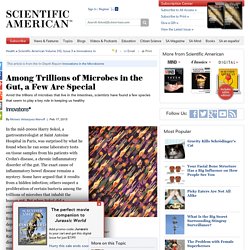
The exact cause of inflammatory bowel disease remains a mystery. Gut Bacteria From Thin Humans Can Slim Mice Down. Bonnie Bassler: How bacteria "talk". Reprogrammed bacterium speaks new language of life - life - 17 October 2013. Read full article Continue reading page |1|2. The Experiment Is on Us: Science of Animal Testing Thrown Into Doubt. (Photo: ressaure)New scientific research has cast grave doubt on the safety testing of hundreds of thousands of consumer products, food additives and industrial chemicals.
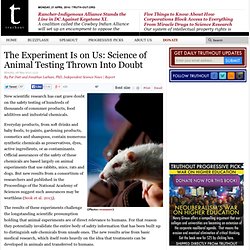
Everyday products, from soft drinks and baby foods, to paints, gardening products, cosmetics and shampoos, contain numerous synthetic chemicals as preservatives, dyes, active ingredients, or as contaminants. Official assurances of the safety of these chemicals are based largely on animal experiments that use rabbits, mice, rats and dogs. But new results from a consortium of researchers and published in the Proceedings of the National Academy of Sciences suggest such assurances may be worthless (Seok et al. 2013). The results of these experiments challenge the longstanding scientific presumption holding that animal experiments are of direct relevance to humans.
For that reason they potentially invalidate the entire body of safety information that has been built up to distinguish safe chemicals from unsafe ones.